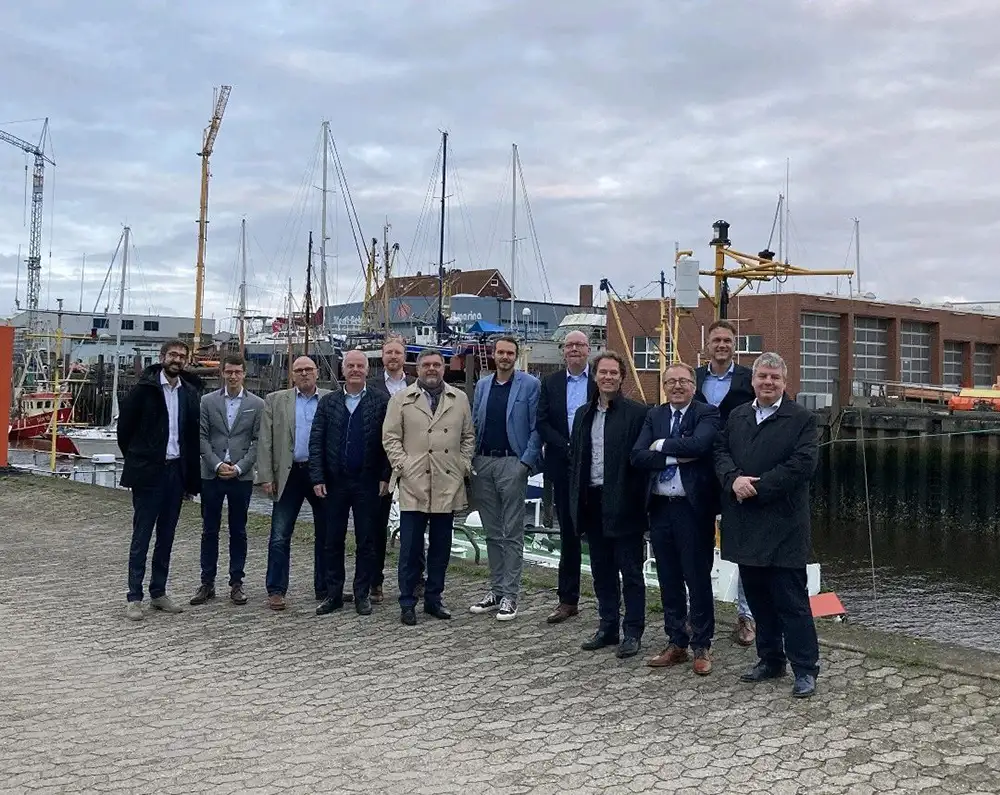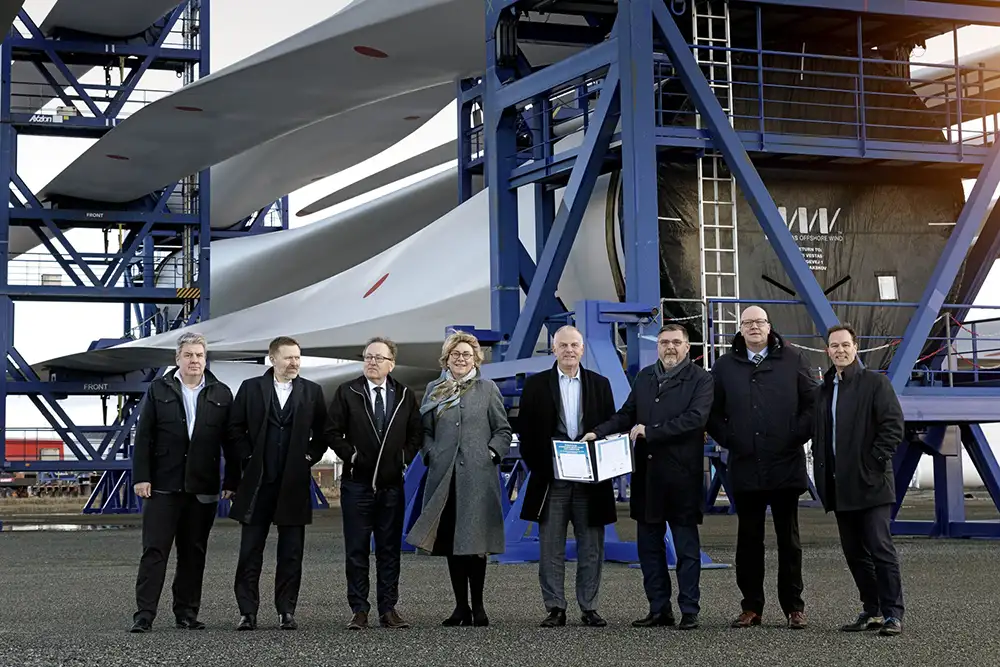
Unique port collaboration for European offshore wind
The Esbjerg Declaration sets the stage for a markedly faster buildout of offshore wind capacity in Europe. The initiative puts great pressure on ports, which are currently experiencing a general capacity shortage. Port Esbjerg has therefore taken steps to set up a partnership between the six key ports for offshore wind in Northern Europe. Earlier today, representatives of the ports agreed on the new partnership at a meeting in Hamburg.
With the Esbjerg Declaration, the targets for offshore wind in Europe have been raised significantly. Germany, Denmark, Belgium, and the Netherlands have defined a combined target of delivering at least 65 GW offshore wind by 2030. This puts pressure on European ports, because it may not be possible to have all offshore wind farms installed in time due to current port capacity shortage.
This has prompted Port Esbjerg in Denmark to forge an alliance with five key ports for offshore wind in Northern Europe with the aim of resolving the capacity issues as soon as possible. Earlier today, representatives of the ports agreed on the new partnership at a meeting in Hamburg. The ports are Port Esbjerg (Denmark), Port Oostende (Belgium), Groningen Seaports / Eemshaven (Netherlands), Niedersachsen Port / Cuxhaven (Germany), Nantes-Saint Nazaire Port (France) and Humber (UK)).
This extended collaboration builds on an already existing agreement that Port Esbjerg previously entered into under the auspices of the Green Port Hull initiative.“
The current geopolitical situation in Europe requires that we install even more wind power. And we need to do so fast. The Esbjerg Declaration proves that transboundary collaboration is the way forward. To alleviate the present capacity issues, we also need to collaborate with other ports. We need to strengthen our collaboration at both the operational and practical level,” says Dennis Jul Pedersen, CEO of Port Esbjerg.
According to Jul Pedersen, this includes collaborating on practicalities as well as sending a signal to the market that the ports are prepared to do their utmost to promote the green transition through offshore wind. To this end, Port Esbjerg has stepped up the direct collaboration with other wind ports.
“Setting ambitious targets is great. But it’s also important that people listen to us and understand that there are limits to what we as ports can do given our current capacity. We believe that by sharing experience, we can increase the pace, and by jointly lobbying politicians, we can help find solutions to the major capacity issues facing our ports,” says Jul Pedersen.
Knowledge-sharing across ports
Specifically, the plan is for representatives of the five ports to meet twice annually to discuss and share insights and knowledge.
For example, they could work together to solve the issue of capacity shortage: If a port only has capacity for half a project, one of the other ports may have capacity for the other half. This would allow for the offshore wind farm to be installed on time instead of being delayed until a port has capacity for the entire project.
Port Esbjerg has already applied this method with great success in an alliance with Groningen Seaports / Eemshaven in the Netherlands, from which 18 offshore wind farms have been shipped.
“We are now joining forces to find the best solutions for offshore wind port optimisation. Together, we hope to be considered as serious partners in the efforts to achieve the targets defined for European offshore wind,” says Erik Bertholet, Business Manager Logistics and Offshore Wind, Groningen Seaports / Eemshaven.
Germany has defined a target of 30 GW offshore wind capacity in 2030, 40 GW in 2035 and 70 GW in 2050. When you view this in the context of the combined European targets, it is obvious that achieving the targets requires a joint and coordinated effort, according to Holger Banik, Managing Director at Niedersachsen Ports GmbH & Co:
“The energy transition poses an enormous challenge for all European players in the offshore industry, so a stable alliance is key to success. Even if the ports are sometimes in competition with each other, we still face the same challenges and responsibilities to shape the European future. Through a joint network, we can also meet the political and market requirements in a better way,” says Banik.
Belgium already has 399 offshore wind turbines in the Belgian part of the North Sea, and Port Oostende is a vital hub for the next zone to be established in front of the west coast of Flanders as well as for other North Sea wind energy projects. CEO of Port Oostende, Dirk Declerck says:
“This collaboration is important for the different ports to reinforce each other. Collecting experience, exchanging knowledge, and providing professional information to all stakeholders active in the offshore wind sector to create a professional platform is very important for the energy transition.”
As opposed to the other countries, France has only recently installed its first offshore wind turbines.
“We’re new to the offshore wind industry, and we’re very proud that we’ve recently completed the first ever offshore wind farm in France. So, we’re looking forward to drawing on the experience of the other ports and to contributing knowledge based on our focus on floating offshore wind farms. We also hope that the partnership will contribute to finding solutions to the bottlenecks we’re all facing,” says Olivier Tretout, CEO of Nantes Saint-Nazaire Port.
Green Port Hull is delivering on the UK Government’s 50GW offshore wind target and Siemens Gamesa continues to drive growth in by doubling the size of its offshore wind blade manufacturing facility in Hull as the world’s largest offshore wind farm Hornsea Two comes online off the east coast off the UK.
The inaugurating partnership meeting of the ports will be held at the Port of Esbjerg later this year.


